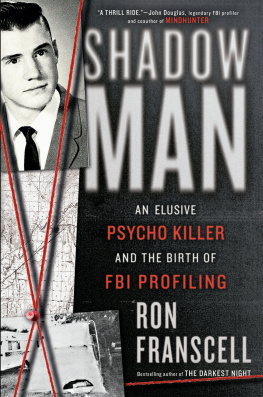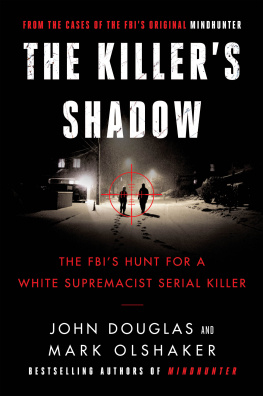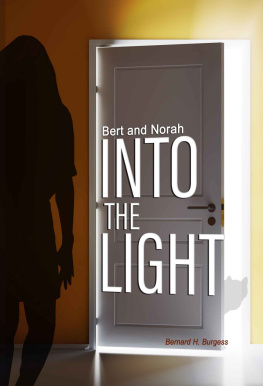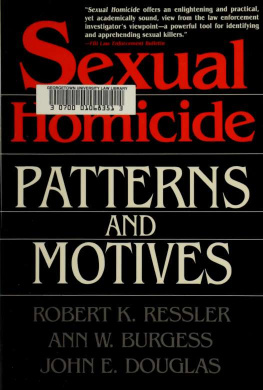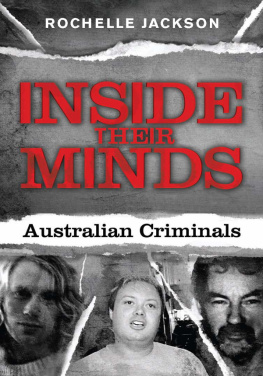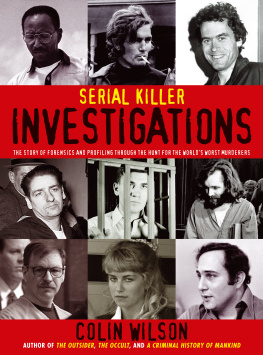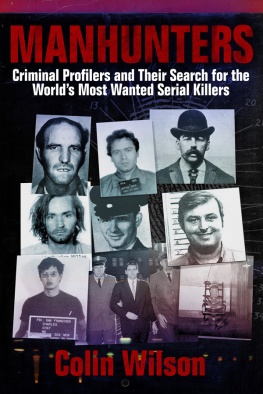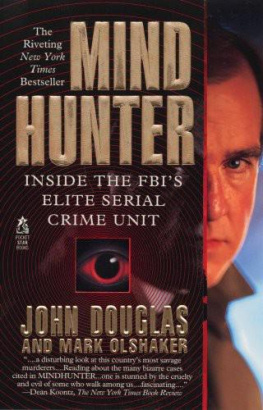
Copyright 2021 by Ann Wolbert Burgess with Steven Matthew Constantine
Cover design by Terri Sirma
Cover photograph mykhailo pavlenko/Shutterstock
Cover copyright 2021 by Hachette Book Group, Inc.
Hachette Book Group supports the right to free expression and the value of copyright. The purpose of copyright is to encourage writers and artists to produce the creative works that enrich our culture.
The scanning, uploading, and distribution of this book without permission is a theft of the authors intellectual property. If you would like permission to use material from the book (other than for review purposes), please contact permissions@hbgusa.com. Thank you for your support of the authors rights.
Hachette Books
Hachette Book Group
1290 Avenue of the Americas
New York, NY 10104
HachetteBooks.com
Twitter.com/HachetteBooks
Instagram.com/HachetteBooks
First Edition: December 2021
Published by Hachette Books, an imprint of Perseus Books, LLC, a subsidiary of Hachette Book Group, Inc. The Hachette Books name and logo is a trademark of the Hachette Book Group.
The Hachette Speakers Bureau provides a wide range of authors for speaking events.
To find out more, go to www.hachettespeakersbureau.com or call (866) 376-6591.
The publisher is not responsible for websites (or their content) that are not owned by the publisher.
Print book interior design by Jeff Stiefel.
Library of Congress Cataloging-in-Publication Data
Names: Burgess, Ann Wolbert, author. | Constantine, Steven Matthew, author.
Title: A killer by design: murderers, mindhunters, and my quest to
decipher the criminal mind / by Ann Wolbert Burgess & Steven Matthew
Constantine.
Description: First edition. | New York: Hachette Books, 2021. | Includes
bibliographical references and index.
Identifiers: LCCN 2021011086 | ISBN 9780306924866 (hardcover) | ISBN
9780306924880 (ebook)
Subjects: LCSH: Burgess, Ann Wolbert. | FBI Academy. Behavioral Science
UnitOfficials and employeesBiography. | FBI Academy. Behavioral
Science UnitHistory. | Psychiatric nursesUnited StatesBiography. |
Forensic nursingUnited StatesHistory. | Criminal behavior,
Prediction ofUnited StatesHistory. | Serial murder
investigationUnited StatesHistory. | Serial murderersUnited
StatesPsychology.
Classification: LCC HV7911.B853 B87 2021 | DDC 364.3092 [B]dc23
LC record available at https://lccn.loc.gov/2021011086
ISBNs: 9780306924866 (hardcover), 9780306924880 (ebook)
E3-20211004-DA-NF-ORI
In Memory of
Robert Kenneth Ressler
Robert Roy Hazelwood
Lynda Lytle Holmstrom
Explore book giveaways, sneak peeks, deals, and more.
Tap here to learn more.

To the reader:
TW: violence, murder, kidnapping, sexual assault, domestic abuse (including children and animals), sexism/misogyny, racism, mental health.
Please note that this book is an account of my work interacting with law enforcement officials, victims of disturbing crimes, and violent criminals. The conversations in this book come from transcriptions and recordings of true events as they actually happened. However, in instances when records were unavailable, Ive conveyed conversations based on contextual documentation and the best of my memory.
Some of the content is graphic in nature, but it has not been sensationalized or embellished. I have made a point of remaining faithful to the reality of events as they occurredso as not to undermine the true nature of the crimes or the trauma they inflicted. It is my sincerest hope that this book reminds us to never forget the victims, and helps honor and memorialize those whose narratives appear within its pages.
One by one, I examined the photos sprawled out on the table in front of me. They were divided into three sets, each a standard forensic collection of overviews, midranges, and close-ups. In the first set, labeled Danny 9.21, the setting of the overviews painted an almost idyllic scene in the quiet Nebraska countryside. But the landscape was only for context. The real focus of the pictures was the small body hidden within them, partially covered by tall grass growing along an unpaved road. The midrange photos were even more unsettling. These depicted the lifeless male victima child or young teenagerbent backward in an unnatural slump. His wrists and ankles were bound with rope, and he was naked except for a pair of navy-blue underwear. Close-ups focused on the boys mutilated body: his sternum torn apart in a chaos of stab wounds, a deep laceration across the back of his neck, his hair matted in tangles of dirt and dried blood. There were flies everywhere.
As I placed these photos back on the table and picked up the next pile, Christopher 12.5, I was overcome by a sense of dj vu. These pictures, taken just yesterday, showed the continuation of a pattern. They depicted a second male victim, indistinguishable in age and appearance from the first, whose body had been found in the same remote stretch of Nebraskan countryside as that of Danny 9.21. The similarities were striking. In this set, however, fall had changed to winter, and by closely inspecting the midrange images I could see a thin layer of snow coating the boys pale skinjust enough to cover his wounds and the features of his face so he looked something like a mannequin. Close-ups revealed puddles of frozen blood outlining the victims head and abdomen. The two photos from the autopsybrightly lit and sharply focused on the small body draped across the examination tablewere even more chilling. The first showed a deep incision where a knife had been pressed into the back of the victims neck and then wrenched, counterclockwise, for several inches, from the right ear to just beneath the chin. The second focused on seven lacerations along the victims belly and chest. It was hard to tell whether these cuts were random or were intended to convey some sort of meaning.
I took a sharp breath to collect my thoughts on that December morning. It was the early 1980s, and I was standing alongside five agents in a large underground conference room known as the bomb shelter in the heart of the FBI Academy in Quantico, Virginia. There were no pictures on the walls, no phones, no distractions. The only window was a small square of wire-reinforced glass that looked out on empty offices and an empty hall. This was an area of Quantico that few people knew about. It belonged to the FBIs Behavioral Science Unit (BSU), and our isolation was a daily reminder of the controversial nature of our work. We hunted serial killers. Our job was to study them, learn how they thought, and find ways to catch them as quickly as possible. We did this through a novel technique called criminal profilinga technique that, at the time, our colleagues throughout the Bureau regarded with varying degrees of skepticism or disdain. But criticism didnt matter, only results. And we were determined to prove just how effective our approach could truly be.
Criminal profiling was the reason we had all gathered that winter morning. Special Agent Robert Ressler was working an urgent case out of Nebraska, and the previous night, hed faxed each of us on the small team within the BSU a briefing and arranged for the room to be set up and ready to go by the time we arrived before the sun came up. We were waiting for Ressler himself to appear. And as we waited, we kept busy with the various documents that stretched across the massive table in front of us. There were case files, autopsy reports, witness testimonies, sketch artist depictions, suspect lists, and the collection of forensic photos I held in my hands. The whole array was equal parts horrifying and impressive.



